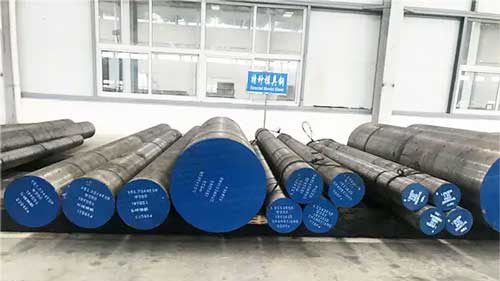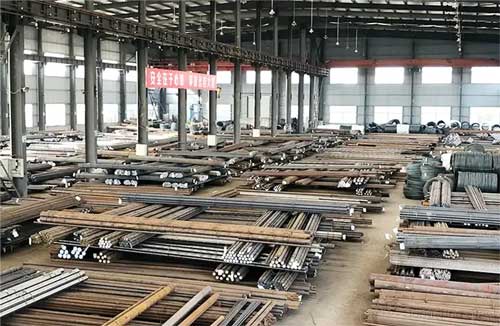Stainless tool steel has become a pivotal material in various industries due to its exceptional properties, contributing significantly to modern manufacturing and production processes. This article aims to delve into the nuances of stainless tool steel, exploring its characteristics, applications, selection criteria, maintenance, and future trends.
Understanding Stainless Tool Steel

Introduction to Stainless Tool Steel
Stainless tool steel stands out as a versatile alloy widely recognized for its resistance to corrosion, high tensile strength, and durability. This alloy primarily consists of iron, carbon, chromium, and other elements depending on specific grades.
Properties and Characteristics of Stainless Tool Steel
The unique composition of stainless tool steel grants it remarkable attributes such as hardness, toughness, and the ability to withstand extreme temperatures, making it an ideal choice for tools and machinery across various sectors.
Grades and Types of Stainless Tool Steel
There exist different grades and types of stainless tool steel, each tailored to specific applications based on their corrosion resistance, machinability, and hardness. Understanding these variations is crucial in selecting the appropriate steel for a particular task.
Applications of Stainless Tool Steel
Industrial Applications
Stainless tool steel finds extensive use in industries like aerospace, automotive, medical, and construction, where precision, durability, and resistance to wear are essential.
Use in Manufacturing Processes
Its application in toolmaking, injection molding, cutting, and shaping processes underscores its importance in modern manufacturing, ensuring high-quality production output.
Advantages in Various Industries
The adaptability of stainless tool steel provides a competitive edge in industries that demand high-performance materials, offering longevity and reliability in demanding operational conditions.
| Application | Description |
|---|---|
| Aerospace Industry | Used in aircraft components, engine parts, and structural elements due to its high strength, corrosion resistance, and durability. |
| Automotive Manufacturing | Utilized for making precision parts, gears, shafts, and engine components owing to its wear resistance and toughness. |
| Medical Equipment Production | Critical for surgical instruments, medical devices, and implants due to its biocompatibility and resistance to sterilization. |
| Toolmaking | Essential for creating cutting tools, molds, dies, and machine components due to its hardness and ability to retain sharp edges. |
| Injection Molding | Employed in molding processes for plastics, ceramics, and metals due to its high surface finish and resistance to abrasion. |
| Construction Industry | Used in construction tools, fasteners, and structural components due to its strength, toughness, and corrosion resistance. |
| Power Generation | Utilized in turbine components, valves, and gears for its resistance to high temperatures, corrosion, and wear. |
| Food Processing | Essential for manufacturing food-grade equipment like cutlery, machinery, and containers due to its hygiene and corrosion resistance. |
| Oil & Gas Industry | Critical for valves, pumps, and drilling equipment owing to its ability to withstand harsh environments and corrosive substances. |
| Precision Engineering | Used in manufacturing high-precision parts and instruments due to its dimensional stability and resistance to wear and fatigue. |
Choosing the Right Stainless Tool Steel
Factors Influencing Selection
Several factors influence the choice of stainless tool steel, including the intended application, environmental conditions, required hardness, and corrosive resistance.
Matching Steel Grades to Applications
Understanding the specific requirements of a task helps in selecting the suitable grade of stainless tool steel, ensuring optimal performance and longevity of tools and equipment.
Considerations for Specific Environments
In harsh environments or specific operational conditions, the selection process involves considering factors like temperature variations, exposure to chemicals, and mechanical stress.
Maintenance and Care of Stainless Tool Steel

Best Practices for Maintenance
Regular cleaning, proper storage, and timely maintenance routines are crucial for preserving the integrity and functionality of stainless tool steel.
Preventive Measures for Durability
Applying protective coatings or treatments and adhering to proper handling practices significantly enhance the longevity of stainless tool steel.
Common Mistakes to Avoid
Ignoring maintenance schedules, exposing steel to harsh conditions, and neglecting suitable storage practices can compromise the durability of stainless tool steel.
Future Trends in Stainless Tool Steel
Innovations and Advancements
Ongoing research and development continually bring forth innovative grades and processes aimed at enhancing the performance and versatility of stainless tool steel.
Environmental and Sustainability Aspects
Efforts towards sustainability and eco-friendly manufacturing processes drive the development of stainless tool steel with reduced environmental impact.
Emerging Technologies and Possibilities
Advancements in nanotechnology and material science present opportunities for further enhancing the properties and applications of stainless tool steel.
In conclusion, stainless tool steel stands as a cornerstone in modern industrial processes, offering durability, versatility, and resilience. Understanding its properties, applications, selection criteria, and maintenance practices is pivotal in optimizing its usage across diverse industries.
FAQs
Q: What makes stainless tool steel resistant to corrosion?
A: The high chromium content in stainless tool steel forms a passive oxide layer that prevents corrosion.
Q: Can stainless tool steel withstand high temperatures?
A: Yes, depending on the grade, stainless tool steel can retain its strength and hardness at elevated temperatures.
Q: What industries benefit most from using stainless tool steel?
A: Industries like aerospace, automotive, and medical equipment manufacturing benefit significantly due to its durability and resistance.
Q: How can one identify the right grade of stainless tool steel for a specific application?
A: Consider the environmental conditions, required hardness, and corrosive resistance needed for the task to select the appropriate grade.
Q: Are there eco-friendly advancements in stainless tool steel production?
A: Yes, ongoing efforts aim to develop sustainable and environmentally friendly manufacturing processes for stainless tool steel.

